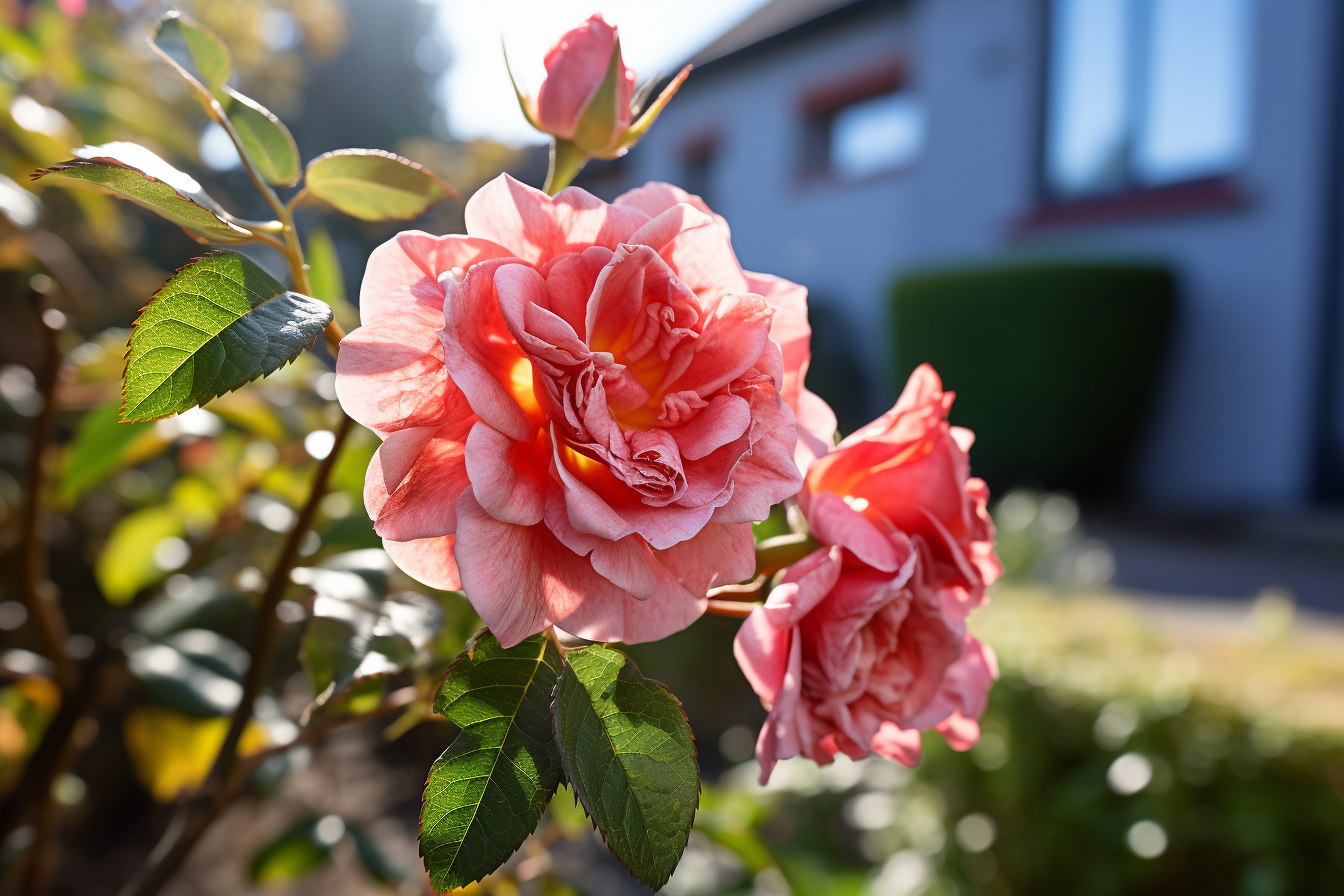Climbing roses are a true wonder of nature. Their long tangled stems which nestle harmoniously on the walls and trellises bring a touch of beauty and romance to our gardens. However, to obtain abundant flowering and healthy growth, it is essential to practice regular and appropriate pruning.
The first tip is to know the nature of your climbing rose bush. Indeed, there are several categories of climbing roses, such as liana roses, vigorous roses or even repeating roses. Each category has specific size needs. For example, climbing roses generally require only light pruning, while vigorous roses can be pruned more severely. It is therefore important to find out about the particularities of your climbing rose bush before starting to prune it.
Once you have identified the category of your climbing rose bush, you can move on to the next step: preparing the pruning tool. It is recommended to use a pair of well-sharpened and disinfected pruning shears. This will allow for clean, precise cuts, reducing the risk of spreading disease. Before each use, clean your pruners carefully with 90° alcohol to eliminate possible pathogens.
Now that you are ready to prune your climbing rose bush, it is essential to know when to intervene. The ideal time to prune climbing roses is generally in late winter or early spring, before new shoots develop. This will allow your rose bush to regenerate quickly and produce abundant flowers.
When pruning, it is recommended to first remove dead, diseased or damaged branches. Then you can proceed to reduce the branches that encroach on the growth space of the other stems. Be sure to cut just above a bud facing outward from the plant, to promote harmonious, airy growth.
Another important tip for successful pruning of climbing roses is to remove faded flowers regularly. By removing faded flowers, you will stimulate the growth of new flowers and thus extend the flowering period of your climbing rose bush. Additionally, this will prevent seeds from forming, allowing the plant’s energy to focus on producing new stems and flowers.
Finally, after you have finished pruning your climbing rose bush, don’t forget to nourish the soil around the plant. A supply of organic fertilizer rich in nutrients will promote vigorous growth and abundant flowering. Also be sure to water your climbing rose bush regularly, particularly during dry periods, to avoid any water stress.
Choosing the right location for your climbing rose bush
An often underestimated but crucial element for the successful growth and flowering of climbing roses is the choice of their location. Indeed, despite the resilience of these plants, the location in which they are planted can have a major impact on their health and productivity.
Importance of light
Light is an essential element for most plants, and climbing roses are no exception. These thrive best in a location with at least six hours of direct sunlight each day. Adequate exposure to the sun guarantees abundant flowering and also prevents the rose bush from developing too dense foliage to the detriment of the flowers.
Soil quality
Although resistant, climbing roses prefer well-drained, rich and slightly acidic soil. Before planting, it is beneficial to carry out a soil test to know its characteristics. If necessary, incorporate organic matter like compost or decomposed manure to improve its texture and richness.
Protect from strong winds
Climbing roses, due to their height, can be sensitive to strong winds. It is therefore wise to plant them in a place where they are partially protected from the prevailing winds. This not only helps them stay healthy, but also preserves the beauty of their delicate flowers.
Proper Spacing
It is crucial to leave enough space around your climbing rose bush so that it can grow unhindered. Plant it at a sufficient distance from other plants or structures to prevent it from invading them or being smothered itself.
Proximity to support structures
Finally, since they are “climbers”, make sure that there is a structure, such as a trellis, pergola or wall, in the immediate vicinity. This not only gives them support to grow, but it also highlights their unique beauty.
The importance of planting companions for climbing roses
In the art of gardening, the practice of associated cultivation, or “companion growing”, can be a valuable asset for strengthening the health and beauty of your plants. For climbing roses, choosing appropriate companion plants can not only improve the aesthetics of the garden, but also boost the health of the rose bush by repelling pests and improving soil quality.
The benefits of companion plants
Companion plants can offer multiple benefits to your climbing roses. Some, for example, naturally repel harmful pests such as aphids, which can otherwise weaken your rose bush. Other plants attract beneficial insects like ladybugs, which are natural predators of pests. Additionally, certain companion plants can also help enrich the soil with nitrogen, an essential nutrient for vigorous growth of rose bushes.
Popular choices for companionship
Aromatic herbs, such as lavender and thyme, are excellent companions for climbing roses. Not only do they add an aesthetic dimension with their distinctive foliage and flowers, but they also repel many pests with their strong scent. Marigolds are another popular option because they keep away soil nematodes that can damage the roots of rose bushes.
Consider plants that contrast or complement
For visual impact, consider plants that contrast or complement the color and shape of your climbing rose bush. Silver-leafed plants, for example, can provide a beautiful contrast to red or pink roses. Low-growing perennials can also be used to cover the ground around the base of the rose bush, protecting its roots while providing an aesthetic appearance.
To consider
Although companion cropping offers many benefits, it is crucial to ensure that the plants chosen as companions do not compete with the rose bush for resources. Avoid plants that are too invasive or those that could potentially smother the rose bush.












